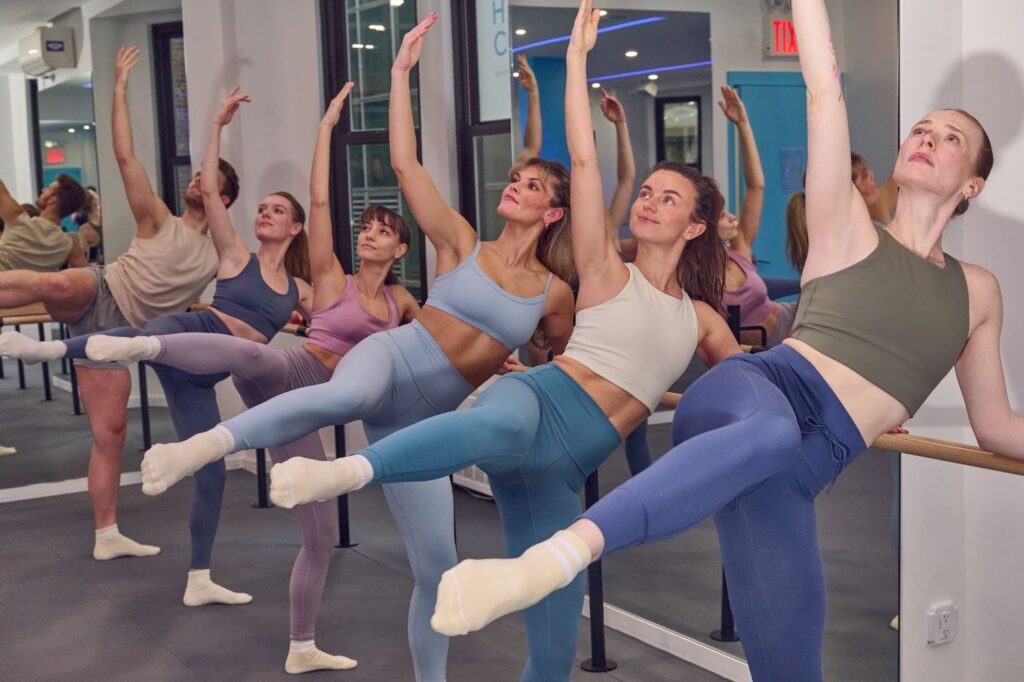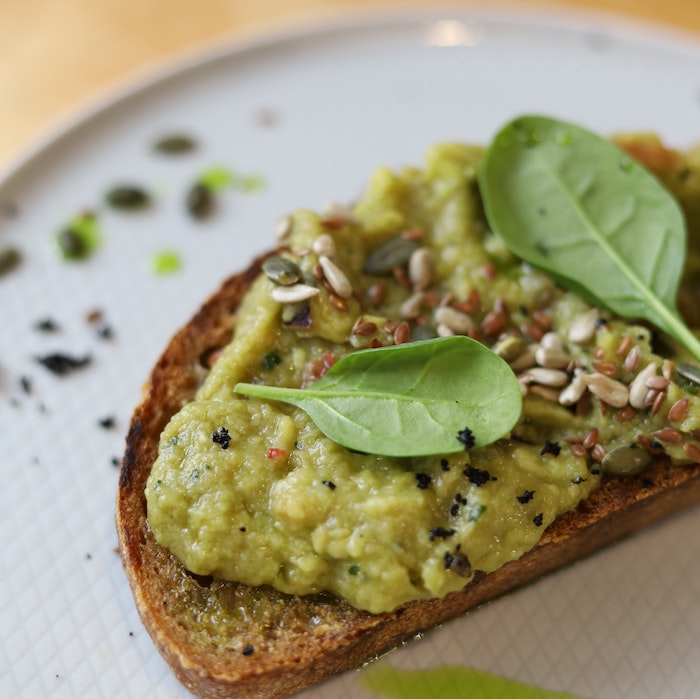Are you a runner who thrives on endurance, focus, and the relentless drive to go the extra mile?
While running builds grit and power, it can also overwork certain muscles, leading to tight hips and imbalances that increase your risk of injury.
Even the strongest stride needs better support through balance, core stability, and strength.
Enter barre—the secret weapon many runners now turn to for cross-training, enhancing your running.
In this blog, we’ll explore how cross-training enhances your running performance, and why barre makes the perfect complement to your running routine.
What is Cross Training?

Cross-training is a game-changer for runners. It’s all about incorporating different types of workouts to support your main sport, running.
Through cross-training, you get to engage different muscle groups and move your body in new ways. It improves overall strength, flexibility, and balance, in turn, enhancing performance and helping prevent injury.
Rooted in ballet, Pilates, and strength training, barre targets the smaller stabilizing muscles that running often overlooks.
When you cross-train with barre, this low-impact yet powerful workout strengthens your core, enhances stability, and restores balance to your runner’s body.
Mixing barre with your runs not only builds endurance but also helps you move more efficiently and recover faster. In the long run, it keeps your workouts exciting and your body strong, balanced, and ready for every stride.
Why Should You Cross-Train with Barre As A Runner

Running is a high-impact sport that builds endurance and mental grit. However, all that repetitive pounding on the ground can take a toll on your joints and muscles.
This is where incorporating a low-impact workout like barre into your routine can make all the difference.
Barre workouts focus on small, controlled, isometric movements—where muscles contract without changing length.
The tiny, precise motions created by barre deeply engage stabilizing muscles that often go underused in running, such as the glutes, hips, and core.
By strengthening these supporting muscles and improving flexibility, barre helps correct imbalances, enhance posture, and reduce your risk of injury. Its low-impact nature also enables active recovery without added strain on your joints.
In short, barre complements the intensity of running with balance, stability, and strength, helping you to move efficiently, recover faster, and run stronger.
How Cross-Training with Barre Improves Your Running
Barre offers runners a balanced way to strengthen, recover, and perform better- physically and mentally.

It’s A Full-Body Workout
Running mainly targets your lower body, but barre engages your entire kinetic chain from your core to your upper body, helping you develop better posture and running efficiency. By strengthening your hips, glutes, and core, you stabilize your stride and minimize unnecessary energy loss.
It’s Low Impact
Barre is gentle on the joints yet builds strength and flexibility. It offers an active recovery that balances the high-impact nature of running, stretching and protecting your muscles in the process.
It Builds Foot Strength
Barre exercises are often done barefoot or with grip socks, awakening smaller muscles in your feet and ankles. Strengthening these areas enhances stability, stride control, and propulsion which are all key to faster, more powerful runs.
It Improves Balance
By training stabilizing muscles in your core, hips, and ankles, barre enhances alignment and coordination. The slow, controlled movements improve body awareness and help you stay steady, even under fatigue. Over time, this translates to smoother strides, better posture, and greater control while running on any terrain.
Helps Prevent Injury
Barre strengthens the often-overlooked stabilizers that support your joints and improve alignment. A strong core, hips, and glutes protect runners from common issues like knee pain or IT band syndrome, keeping your body resilient and ready for every run.
You Gain Mental Strength
Barre challenges you to stay focused and push through the burn with precision and control. Each small movement demands presence, patience, and endurance- the same mindset needed to power through long runs. Over time, this mind-body connection enhances your mental resilience, keeping you calm, strong, and determined, whether on or off the road.
How to Incorporate Barre Workouts Into Your Running Routine
If you’re a runner who wants to cross-train with barre, incorporating it into your routine is simple, and can be done gradually for the best results.

Add 2 to 3 barre classes a week on your non-running or recovery days to strengthen key muscles that support your stride (your glutes, hamstrings, core, and calves) all while improving flexibility and posture.
On lighter running days, a shorter barre session can boost mobility and active recovery without necessarily adding strain. It’s not about intensity; it’s about consistency that builds real results.
At Physique 57, our barre method is designed to complement high-impact workouts like running. Each class seamlessly combines strength, movement, and mindful precision to engage every muscle and unlock your body’s full potential.
Our expert instructors are your ultimate training partners. We are here to guide your form, alignment, and progression so you can move safely as you strengthen those muscles that will keep you going mile after mile.
Whether you’re chasing your new personal best or simply looking to run faster and better, Physique 57’s barre workouts can help you become a better, stronger runner.
If you’re ready to elevate your performance, try a Physique 57 barre class today. Or stream one of our workout videos at your convenience.
Unlock the key to feeling your best inside and out with barre!



